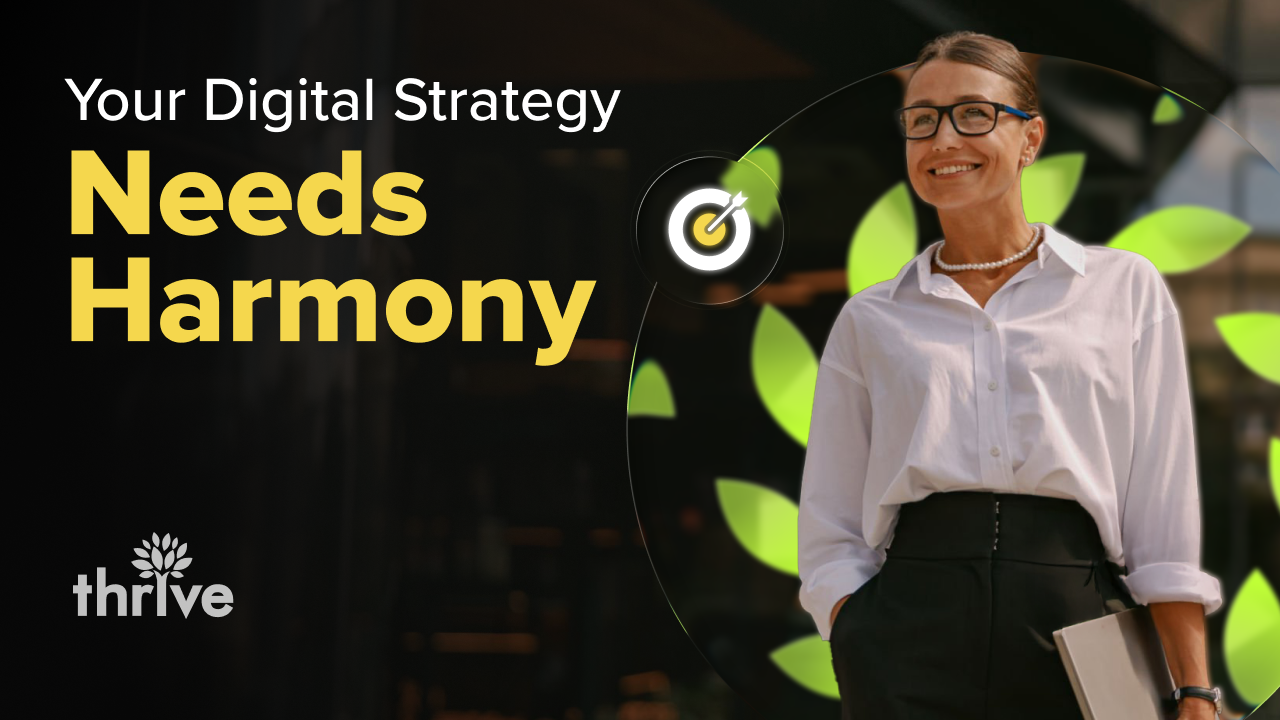It’s no longer enough to simply tell customers what you offer. Audiences seek authenticity, and user-generated content (UGC) has become a powerful tool for brands to deliver just that.
UGC perfectly complements customer-centric marketing strategies. By showcasing real experiences, it fosters a genuine connection between brands and their audiences — something traditional campaigns often fall short of.
UGC-powered customer-centric marketing is designed for a time when customers expect to be heard, valued and engaged.
What Is User-Generated Content?
User-generated content, or UGC, is exactly what it sounds like. It is content created by the people for the people. It’s the photos, videos, reviews, blog posts, social media captions and even memes crafted by real users, not brands.
Unlike traditional marketing content, which is carefully curated and polished by teams of professionals, user-generated content creation carries an unfiltered, authentic look and feel. This characteristic is what makes them more effective to audiences.
Types of UGC:
• Social media posts
• Live streams
• Reviews
• Blogs
• Podcasts
UGC is everywhere. Social media platforms like Instagram or TikTok often take the form of images or videos showcasing how someone uses a product in their everyday life. Think of a foodie sharing a snap of their favorite restaurant’s signature dish or a fitness enthusiast posting a workout routine featuring their go-to supplements.
Then there are reviews and testimonials — staples of platforms like Yelp, Google, or Amazon. These provide unvarnished feedback, often influencing purchase decisions far more than a brand’s promotional efforts. Blogs and how-to articles are another impactful form of UGC, offering deeper insights into products or services from a customer’s point of view.
Different platforms naturally shape the type of UGC they host. For example, Pinterest is for aspirational content like mood boards and DIY tutorials, while X excels at sparking conversations, often through short, punchy testimonials or reactions. Each piece of UGC, regardless of format or platform, offers a unique glimpse into how customers perceive the products or services they use.
UGC marketing is like digital word-of-mouth marketing.
What Is Customer-Centric Digital Marketing?
Customer-centric digital marketing is all about designing strategies that revolve around the customer’s needs, preferences and behaviors.
Unlike traditional digital marketing, which often takes a product-first approach — highlighting features, discounts and mass appeal — customer-centric marketing flips the focus entirely. It prioritizes creating meaningful experiences, understanding pain points and building long-term relationships rather than just chasing one-time conversions.
The shift to customer-centric marketing became essential now that consumers demand more from brands. Brands are expected to not only understand them but also anticipate their needs. Personalization has also become the baseline for customer engagement and customer loyalty.
In traditional digital marketing, the goal was often to reach as many people as possible through generic messaging. Think banner ads plastered across websites or email blasting promotions to entire (unsegmented) mailing lists. While this approach worked for years, it lacked the personal touch needed to truly resonate with individuals. Customers were treated as numbers, not people, and the results often felt impersonal and transactional.
A customer-centric approach allows businesses to tailor their content marketing strategy, products and services to align with what their audience actually wants.
Tying It Together: The Benefit of UGC in Customer-Centric Digital Marketing
UGC can help you recommend a product they’ve already been researching or using instead of sending a customer an ad for something they’ve never shown interest in.
By weaving authentic, customer-created content into their campaigns, brands can deliver personalized experiences, build trust and drive deeper engagement. Here’s how UGC transforms customer-centric marketing efforts:
1. UGC Provides Customer Data
Every piece of UGC offers rich insight. Whether it’s a product review, an Instagram story, or a TikTok trend, UGC spells out what customers like, need and care about. For example, a skincare brand may notice their audience raves about a specific ingredient in their reviews, prompting them to create products that highlight it. Social media posts can also reveal customer preferences — for instance, if customers frequently share photos of eco-friendly packaging, it signals a growing interest in sustainability.
This real-time data allows brands to fine-tune their offerings and messaging, ensuring their strategies are grounded in what their audience genuinely values.
2. UGC Is Social Proof
Nothing convinces potential customers, like seeing others rave about a product or service. UGC acts as social proof, showcasing real people using and loving a brand’s offerings. Reviews on sites like Amazon or Yelp, unboxing videos on YouTube and testimonial posts on Instagram make your brand more trustworthy and relatable.
Skepticism about ads is high. With UGC being a strong kind of word-of-mouth marketing and social proof, you have an organic and credible endorsement. After all, it’s created by the very people your audience trusts the most: other customers.
3. UGC Promotes Brand Authenticity
As mentioned, authenticity is the heartbeat of customer-centric marketing, and UGC delivers it effortlessly. Unlike polished brand ads, user-created content feels genuine because it reflects real experiences. A photo of someone casually enjoying their new gadget or an unfiltered review carries more weight than a staged commercial ever could.
Take Airbnb, for example. Its UGC campaigns showcase travelers’ photos and stories, making the brand feel relatable and human. By embracing the unpolished charm of UGC, brands come across as more approachable and in tune with their audience.
4. UGC Encourages Engagement
UGC isn’t just a one-way street — it’s a conversation starter. When brands reshare a customer’s post or respond to their reviews, it fosters a sense of community and encourages more interaction. Think of brands like Starbucks, which actively features customer creations and seasonal drink ideas.
This kind of customer engagement not only boosts brand visibility but also strengthens emotional connections, turning customers into active participants in your marketing efforts rather than passive observers.
5. UGC Improves SEO
UGC can also work wonders behind the scenes by boosting your SEO performance. For example, when your brand is mentioned in a blog post that links back to your website, it creates a valuable backlink — something search engines love. Similarly, reviews and testimonials add fresh, keyword-rich content to your pages, improving your site’s searchability.
Even social media user-generated content creation contributes indirectly by driving traffic to your website, signaling to search engines that your brand is popular and relevant. Over time, this combination of visibility and backlinks strengthens your online presence and helps you rank higher on search engine results.
6. UGC Is Cost-Effective
As a bonus, UGC offers an incredibly low-cost way to generate content and amplify your brand’s presence. Instead of spending large budgets on professional photoshoots or video productions, brands can leverage content already created by their customers. From Instagram posts highlighting your product to glowing YouTube reviews, UGC allows you to showcase your offerings without the hefty price tag.
For example, a small clothing brand’s content marketing strategy might feature customer photos wearing their designs, essentially turning their loyal shoppers into ambassadors. This not only saves on production costs but also gives the brand a steady stream of fresh, authentic content that resonates with potential customers. It’s proof that impactful marketing doesn’t always have to come with a premium price.
UGC Creators and Influencer Marketing
It’s easy to lump user-generated content (UGC) and influencer marketing together, but they’re not the same. While both rely on content creation outside of your internal marketing team, they serve different purposes and come from distinct sources.
Influencer marketing involves collaborating with individuals who have a significant following and influence within a specific niche. These influencers are often paid or incentivized to create content that promotes your brand, offering your business access to their audience. It’s a more structured, transactional approach that typically includes clear deliverables, like product reviews, social media posts, or sponsored campaigns.
On the other hand, UGC is organic and driven by your customers. It’s the authentic content they share because they genuinely love your product or experience. While UGC doesn’t inherently require payment, there is some overlap — especially with UGC creators.
UGC creators are individuals who, while not traditional influencers, create high-quality content and may collaborate with brands for mutual benefit. Think of them as the bridge between pure UGC and influencer marketing.
The key takeaway? While influencer marketing builds reach through partnerships, UGC strengthens trust through authenticity. Together, they can create a dynamic and effective marketing strategy that maximizes engagement and impact, leading to customer loyalty.
6 UGC Best Practices
UGC is all about brand authenticity and trust, but that doesn’t mean it should go unfiltered or unmanaged.
Here are some best practices to ensure your UGC strategy hits the mark:
1. Use Social Listening to Find UGC
UGC is everywhere, but not all of it is equally impactful. Social listening tools can help you uncover the wanted content that’s not only creative and relevant but also aligns perfectly with your brand’s voice and values.
2. Comment on UGC
A thoughtful comment or reaction shows that your brand values its customers and their contributions. Something as simple as “This is amazing! Thanks for sharing!” can go a long way in building goodwill and encouraging others to create content for you.
3. Only Reshare Positive UGC
It’s important to carefully curate what you reshare, especially for big brands or highly popular products. Sharing negative or off-brand content can backfire, undermining your message and brand image. Plus, no brand wants to amplify content that reflects poorly on them.
4. Ask for Permission to Reshare
Always ask the original creator for permission before sharing their content. This isn’t a legal requirement but a sign of respect. Most creators will be thrilled that their content caught your eye, and asking for their consent makes them feel appreciated and valued.
5. Give Credit
When resharing UGC, always credit the original creator. Tagging them on social media or including their name in a caption not only gives them visibility but also strengthens the sense of community around your brand. It can even encourage others to join the conversation.
6. Encourage UGC Organically
The best UGC doesn’t feel forced. Create opportunities for your audience to naturally share their experiences with your brand. This could be through fun challenges, interactive hashtags, or by spotlighting customer stories.
While organic UGC is often the most authentic, you can also take it a step further by partnering with UGC creators. Influencers and micro-creators can help you generate high-quality content while keeping things relatable.
Examples of UGC Campaigns
Here are three standout examples of UGC campaigns that have generated a real amount of content and community engagement
LEGO Ideas
LEGO Ideas is a brilliant initiative where LEGO fans can submit their own designs for potential new sets. If a design gets enough votes from the community, LEGO considers it for production, and the creator even receives a share of the profits.


This campaign showcases LEGO’s dedication to creativity and collaboration, letting their most passionate fans directly influence the brand’s offerings. It’s a win-win: Fans get recognition, and LEGO gains innovative product development ideas signed by their community.
GoPro’s Challenges
GoPro engages its community with regular UGC challenges, including the famous Million Dollar Challenge, where users can win a share of $1 million by submitting their best GoPro footage. The brand also runs other challenges throughout the year, all featuring a dedicated landing page for easy submissions.

Rewards include social media features, GoPro gear and cash prizes, creating strong incentives for participation. These challenges not only showcase the brand’s adventurous spirit but also highlight the power and versatility of GoPro through real user content.
Shot on iPhone
Apple’s “Shot on iPhone” campaign turned everyday users into brand ambassadors. By featuring stunning photos and videos captured by real iPhone users in their ads, billboards and social media, Apple showcased the power of its product through the lens of its users.

Central to the campaign was the #ShotOniPhone hashtag, which allowed users to share their content globally and made it easier for Apple to discover standout submissions. The hashtag quickly became a cultural phenomenon, inspiring millions of iPhone users to participate and share their own creations.
| 🌱 Check out Thrive’s services: • Social media |
|---|
Let’s Help You Discover and Encourage More UGC
At Thrive, we’re all about relationships and results — the very foundation of customer-centric marketing. Using tools like social listening, we can help you uncover unique UGC opportunities and build meaningful connections with your audience.
Let’s help you harness the power of UGC for your next marketing strategy. Send us a message.
UGC Frequently Asked Questions
WHAT IS USER-GENERATED CONTENT (UGC) AND WHY DOES IT MATTER IN DIGITAL MARKETING?
User-generated content is any material customers create about your brand, from reviews and social media posts to blogs and videos. It matters because it reflects authentic experiences that audiences trust more than polished ads. Thrive helps businesses uncover and amplify UGC so it works as a natural extension of their customer-centric strategies.
HOW DOES UGC SUPPORT CUSTOMER-CENTRIC DIGITAL MARKETING?
By reflecting the voices of real customers, UGC helps brands listen, respond and adapt to what people actually care about. It turns marketing from one-way messaging into an ongoing conversation. Thrive uses social listening and campaign development to help brands translate those conversations into stronger relationships.
WHAT ARE THE BENEFITS OF USING UGC IN A MARKETING STRATEGY?
UGC acts as social proof, fuels authenticity, encourages community engagement and can even improve search visibility. It also reduces production costs since brands can showcase customer-created content rather than relying solely on in-house assets. Thrive builds strategies that integrate UGC seamlessly across social media, email and web content so its impact lasts.
WHAT’S THE DIFFERENCE BETWEEN UGC AND INFLUENCER MARKETING?
Influencer marketing involves partnerships with individuals who have established followings, while UGC is content created voluntarily by everyday customers. Both have value, but UGC often feels more relatable and spontaneous. Thrive helps brands find the right mix of UGC and influencer collaborations to expand reach while maintaining authenticity.
HOW CAN THRIVE HELP MY BUSINESS LEVERAGE UGC?
Thrive specializes in finding, curating and encouraging UGC through campaigns that highlight your customers’ voices. Our team supports everything from content curation and copywriting to video testimonials and full-service digital strategies, ensuring UGC not only gets noticed but also drives meaningful results for your brand.








